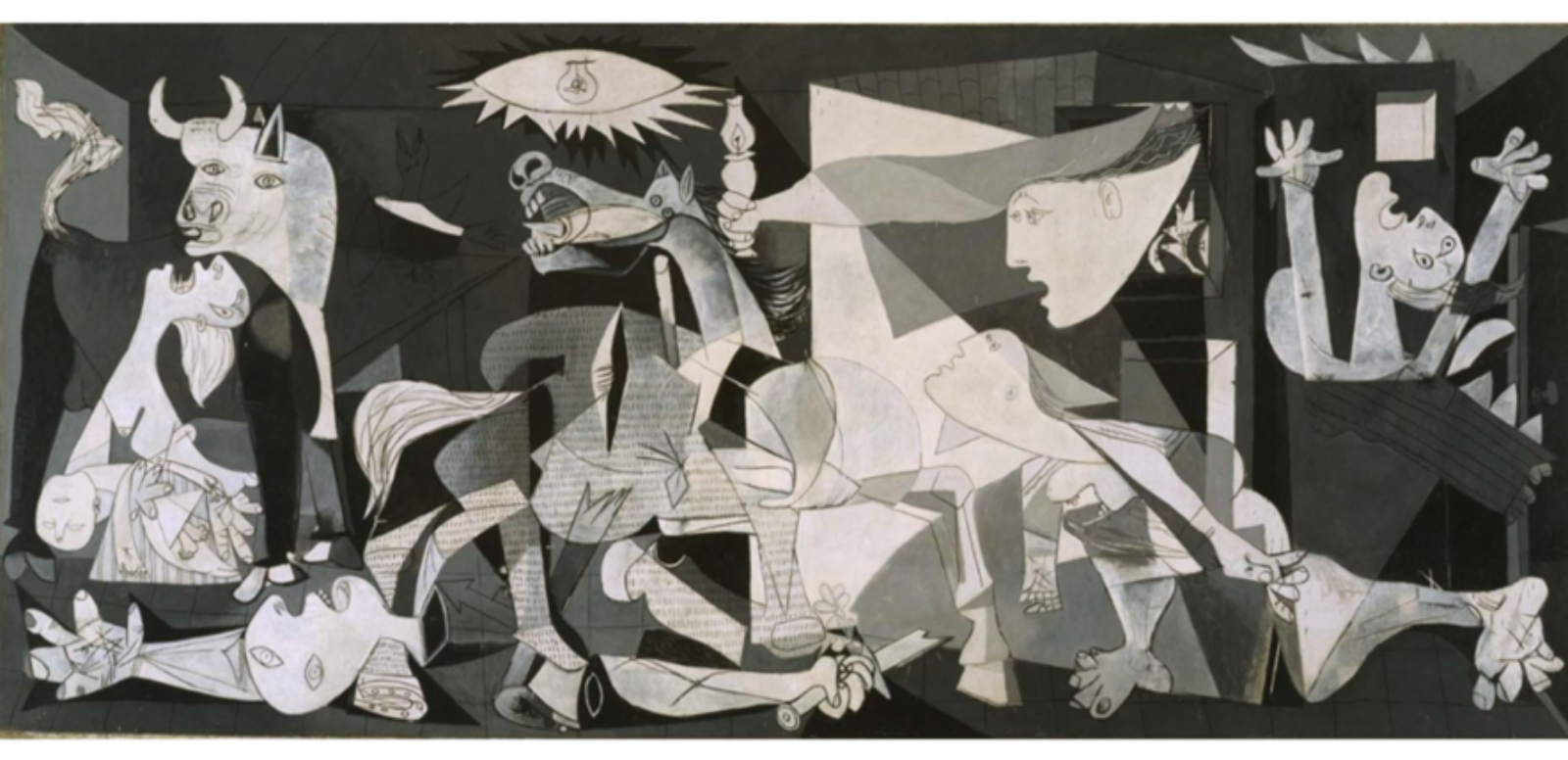
© Sucesión Picasso, VEGAP, Madrid, 2023.
Pablo Picasso is one of the most influential artists of the 20th century and his works have been recognized worldwide. His innovative style and constant experimentation have been a source of inspiration for generations of artists. In this article, we highlight some of his most influential masterpieces that would not exist without Picasso and briefly detail his creative process.
Les Demoiselles d'Avignon (1907)
Les Demoiselles d'Avignon is considered a masterpiece and precursor of the Cubist movement. The painting features five nude female figures, two of them wearing African masks and one in Iberian profile. Picasso began working on this work in 1906 and the process of creation was quite complex. The painting is based on a group of women in a brothel who are visited by a student and a sailor, evolving into its final form that dispenses with the male figures. Picasso experimented with different styles and techniques, such as primitivism and geometrization, until he finally created this revolutionary work.
Guernica (1937)
Guernica is one of Picasso's most famous "mural" works and allegorically depicts the bombing of the Spanish city of the same name during the Spanish Civil War. The work is a symbol of the struggle against war and violence and was created in 1937 for the Pavilion of the Spanish Republic at the International Exposition in Paris. To create Guernica, Picasso used a still cubist style, which did not please many who wanted a more easily understood work to spread the Republican cause. He worked on the work in a Parisian studio, painting on a large canvas. Picasso experimented with different compositions and elements before arriving at the final version of the work, whose evolution we know thanks to the photographer Dora Maar.
La Vie (1903)
This work is one of the earliest in Picasso's career and shows great technical skill. It was painted in Barcelona and is one of the artist's most ambitious works of this period, mainly because of its symbolism. The painting depicts life as a couple and death, and is believed to have been inspired by the artist's relationship at the time. It has a somber and emotional approach, with powerfully sculpted figures and a dark, dramatic color palette.
Old Guitarist (1903-1904)
One of the most representative pieces of Picasso's blue period. In this work the blue monochrome completely invades the composition except for the guitar. The painting represents an old blind man who plays the guitar in the street, one of the few objects he has left and becomes his only companion in solitude. Through the lonely figure of the old man and the guitar, Picasso conveys the sadness and loneliness of life and, at the same time, pays homage to Spanish popular culture.
These are just a few of the masterpieces that would not exist without Picasso's influence. His work has been a source of inspiration for generations of artists and remains relevant in the art world today. His creative process was varied and he was always experimenting with different techniques and styles to create his works.
Sources:
The Museum of Modern Art . Les Demoiselles d'Avignon, Disponible aquí
Museo Nacional Centro de Arte Reina Sofía. Guernica. Disponible aquí
Cleveland Museum of Art. La Vie. Disponible aquí
Art Institute Chicago. (s.f). The Old Guitarist. Disponible aquí

